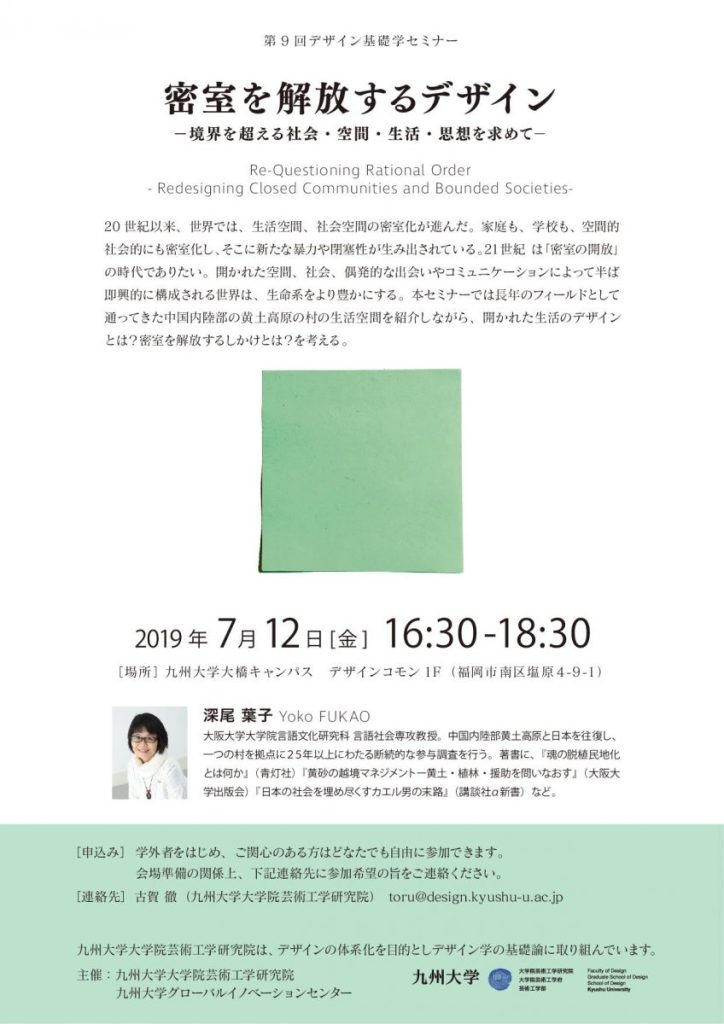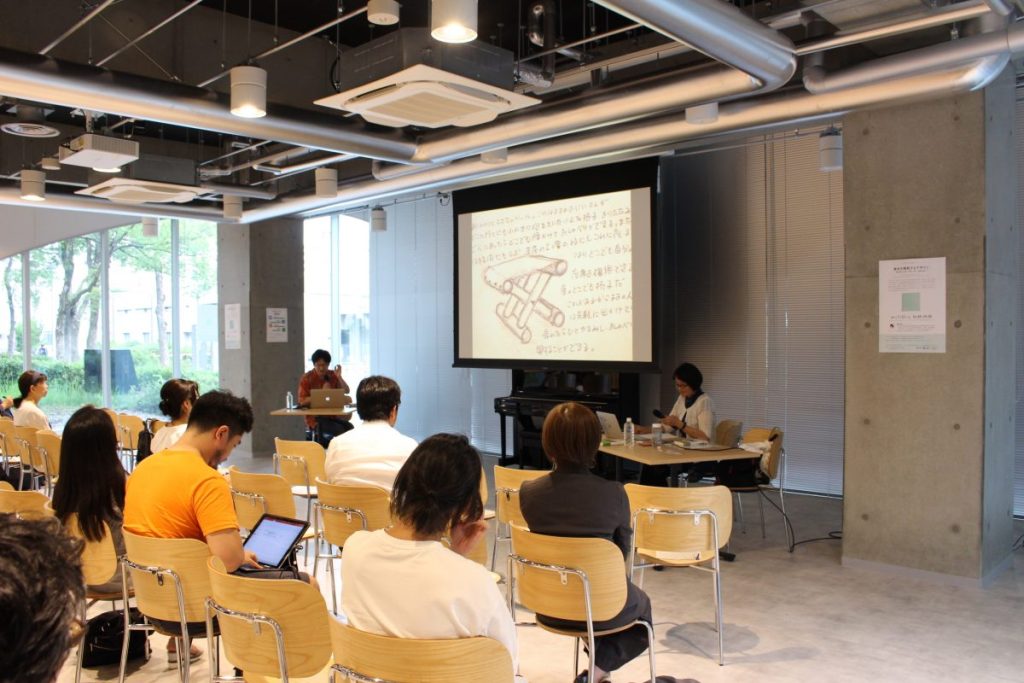The 9th Design Fundamentals Seminar “Re-Questioning Rational Order: Redesigning Closed Communities and Bounded Societies”
In recent times, especially from the 20th century onwards, our everyday living and social spaces have been transforming to become ever more enclosed. With the protection of individual rights; the establishment of national borders; and the use of concrete in architecture, humans have been born, raised, and living in confined spaces. This trend can be witnessed in our social structures and their underlying theories; regional design plans; and house designs. This manner of enclosure is referred in the talk as the “barricading process”. The “barricading process” is also evident in academic thought, where lines demarcating the boundaries of intellectual specialisms have been deepening, while a more general approach to knowledge has been fading. In households and schools, enclosures have been taken place spatially and socially, giving rise to new forms of violence and leading to obstructive exclusiveness. She argues that the 21st century is a time to escape from the 20th century trend of closed off-ness, to “open barricaded spaces”. The world is fundamentally structured upon improvised spaces of openness and liberated societies where spontaneous encounters and communications can take place. Such freedom begets a more harmonious life cycle. As such, the breaking down of restrictive barriers should be the mission of mankind. By referring to the extensive field work Professor Fukao has conducted on a village in inland China, Loess Plateau, this proposal is argued for.
Lecturer
Yoko FUKAO (Professor at Osaka University Graduate School of Languages and Cultures, Studies in Language and Society)
Yoko Fukao specialized in the study of the Chinese language at Osaka University of Foreign Studies and graduated in 1985. In 1987, she completed her doctoral studies in Oriental history at Osaka City University. In the same year, she became an assistant lecturer at Osaka University of Foreign Studies. Following her subsequent appointments as lecturer and assistant professor, in 2007, with the assimilation of the university with Osaka University, she was appointed to the post of associate professor of global management studies with the School of Economics. And in 2018 she returned to the Division of Language Studies at Osaka University of Foreign Studies. Since 2019 she has been a professor there. In the meantime, she has travelled between Japan and Loess Plateau, located in inland China, to conduct a continuous, 25-year long research on a single village.
She has published numerous works, including “Tamashii no Datsushokuminchi-ka towa nanika” (Seitosha); “Kosa no Ekkyo Management: Odo, Shokurin, Enjo wo toi naosu” (Osaka University Print); “Nihon no Otoko wo Kui Tsukusu Tagame-jo no Shoutai”; and “Nihon no Shakai wo Ume Tsukusu Kaeru Otoko no Matsuro” (Kodansha, αShinsho). She has also jointly authored “Odokogen no Mura: Onkukan, Shakai” (Kokon). Furthermore, she has edited “Odokogen, Midori wo Tsumugi dasu Hitobito: ‘Midori Sei’ Shu Jo Hitsu wo meguru Ugoki to Katari” (Fukyousha); “Manshu no Seiritsu: Shinrin no Shojin to Kindai Kukan no Keisei” (Nagoya University Press); and “Hong Kong Barricade” (Akashi Shotenn).
Date
July 12th (Friday), 2019, 4:30-6:30 p.m.
Venue
Kyushu University Ohashi Campus, Design Commons 1F

Review
To clarify things, identify problems, and solve them effectively, perspective and a framework are necessary. Without the framework, there can be no design or academics. However, the more design incorporates science and precision, it tends to follow its own set of rules, shut itself off from the outside, creating closed chambers and getting trapped within. As a result, the design fails because the elements removed from the framework play a decisive role. In design, this kind of paradox is called “wicked problem”.
Ms Yoko Fukao says that the houses and villages on the Loess Plateau have developed along the branches of the river tributaries. In this place, the individual perspectives and framework for the family, villages, the whole valley has been unframed. The information structure becomes open and universal. This unframing is actualized through “enriched talk” done by people of all sorts of hierarchies.
What is enriched talk? It is a “chat” without any aim and dependent on the attractiveness of the information. Language in meetings and academic papers discuss matters with specific perspectives and frameworks while chatting always relativize and disrupt, making it difficult to achieve a goal.
However, an unframed language has the roots of creativity and self-innovation in a seemingly random manner. Ms Fukao argues that the design should be done in accordance to the unframed talk, in line with the logic, which is enriched unintentionally. Is this possible?
In fact, for the Loess Plateau, the afforestation projects that were planned and implemented with a framework, procedures, and budgets failed. Ms Fukao said that only projects that employed methods rooted in conversation with people could be successful. The people will pass on information and belief voluntarily even after the main leading individuals are gone. Thus, woods and forests can continue to grow.
If the framework that was meant to sustain lives resulted in oppressed lives, the design to counter the “wickness” will be the spontaneous conversation. Only such an approach can bring happiness to people.
(KOGA Toru)


